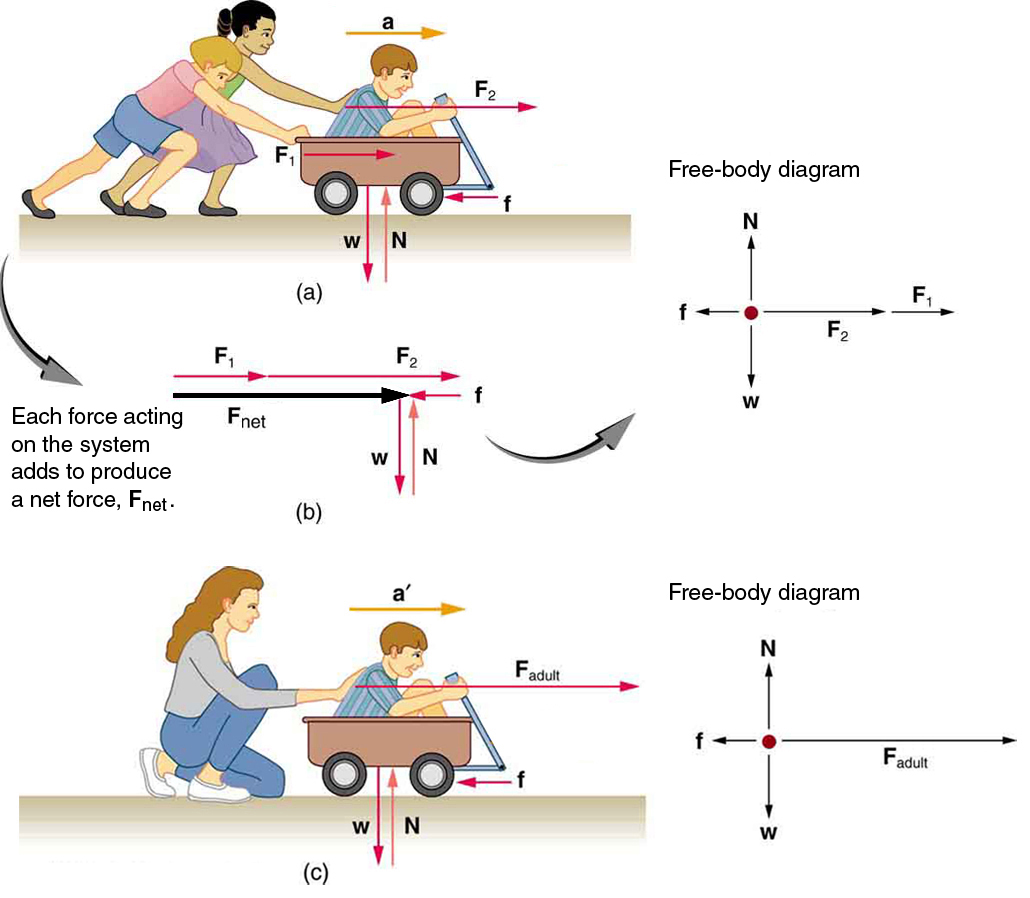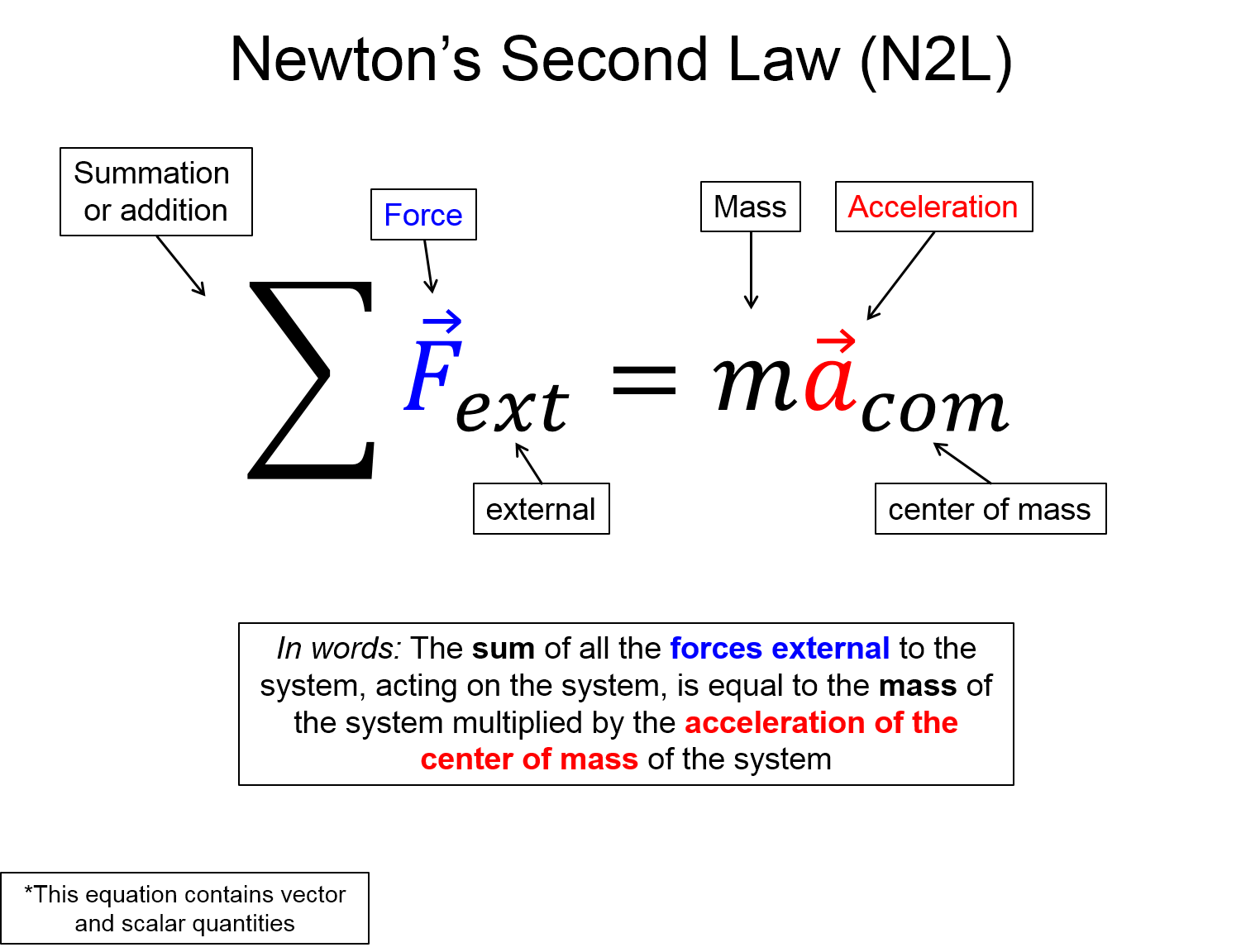Problem Solving Guide
Algorithm
Misconceptions & Mistakes
This Flipping Physics video provides an explanation that might help clarify a common misconception when applying Newton's 3rd law; Force pair clarification.
https://www.youtube.com/watch?v=8bTdMmNZm2M
Pro Tips
- Remember that force pairs always act on different objects and in opposite directions but with the same magnitude.
- Take great care in using subscripts to label forces. The subscripts will make identifying force pairs much easier.
- When looking at the forces always start by identifying the object (that the force is acting on) and the agent (what is applying the force). These two objects will have force pairs on them. For more info on identifying forces see here.
Multiple Representations
Multiple Representations is the concept that a physical phenomena can be expressed in different ways.
Physical

Mathematical
The main mathematical representation for forces will be applying Newton's Second Law to a physical problem. You will need to analyze the motion of an object and create a free body diagram of the relative forces in order to derive the force equations. We learned in the kinematics section how to analyze motion without any concern about the forces that caused the motion. The infographic below describes the relationship between force and acceleration. Thus, we may now analyze the forces acting on an object to determine the relative acceleration.

Graphical

Descriptive
A physics student is pushing a $17 \; kg$ crate across a frictionless floor with an acceleration of $0.25 \; m/s^{2}$. What is the relative force the student is applying? We know the mass of the crate, and that the acceleration is a constant $0.25 \; m/s^{2}$. Therefore, we may apply the mathematical representation and determine the relative force the physics student is applying to the crate.
Experimental
We could go out and physically push a $17 \; kg$ crate on a mostly frictionless surface and measure the average distance we travel for some period of time. By measuring the average distanced traveled per unit time, we can determine the acceleration by determining the slope of a velocity versus time graph. This would allow us to use Newton's Second Law and relate the force to acceleration.